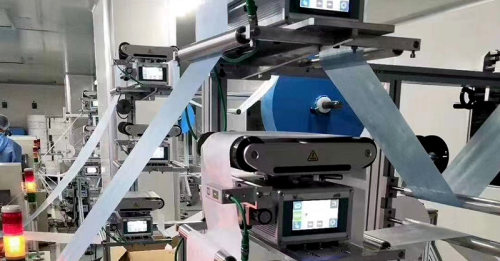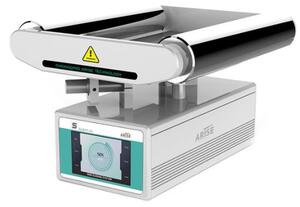A Best Guide to Troubleshoot Common Issues in A Web Guide System
Body
Web guide systems play a vital role in various industries by ensuring precise alignment and management of webs during manufacturing processes. However, like any complex system, they can encounter challenges that hinder operations. This comprehensive guide provides step-by-step troubleshooting methods for common issues in a web guide system, helping organizations maintain maximum performance. By understanding these challenges and implementing appropriate troubleshooting techniques, companies can minimize downtime, improve productivity, and ensure smooth operation.

Troubleshooting Misalignment and Drift in a Web Guide System:
Check Sensor Calibration: Begin by verifying the calibration of the sensors. Ensure they are correctly aligned and calibrated according to the manufacturer's instructions. If necessary, recalibrate the sensors to ensure accurate detection and measurement of the web's position.
Check Roller Alignment: Improper roller alignment can cause misalignment and drift. Inspect the rollers and reposition them if needed. Align the rollers parallel to each other and perpendicular to the web's path.
Inspect Mechanical Components: Examine the mechanical components of the web guiding system, such as rollers, bearings, and guides. Look for signs of damage, wear, or contamination. Replace any worn-out or damaged components and clean debris or contaminants that may interfere with the web's movement.
Troubleshooting Tension Variations in a Web Guide System:
Check Roller Tensioning: Improper roller tensioning often leads to tension variations. Ensure the tensioning mechanisms are correctly adjusted based on the recommended tension settings for the specific web material. Consult the system's documentation for proper tensioning guidelines.
Maintain Consistent Material Feed: Inconsistent material feed can cause tension variations. Check that the material is being fed consistently and smoothly through the guiding system. Inspect the material path for blockages or irregularities and remove them if necessary.
Inspect Roller Surfaces: Examine the roller surfaces for abnormalities or damage that could affect web tension. Ensure the rollers are clean and free of debris or adhesive buildup. Replace any broken or worn-out rollers to maintain proper tension management.
Install Automatic Tension Control Systems: Consider installing an automatic web tension controller that monitors and adjusts tension in real-time. These systems utilize feedback sensors and control algorithms to maintain constant tension throughout the manufacturing process.

Troubleshooting Sensor Malfunctions in a Web Guide System:
Clean the Sensors: Sensors can accumulate dirt, dust, or debris over time, resulting in false readings. Use appropriate cleaning solutions and lint-free materials to clean the sensors. Take care not to damage or misalign the sensors during the cleaning process.
Check Sensor Alignment: Ensure the sensors are properly aligned with the web path. Confirm that the sensors are positioned perpendicular to the web's direction and parallel to each other. Make any necessary adjustments to achieve correct sensor positioning.
Verify Electrical Connections: Examine the connections between the sensors and the control system. Ensure the connections are secure and free from corrosion or loose wires. Test the sensor signals to ensure they are correctly transmitted to the control system.
Perform Sensor Calibration: Follow the manufacturer's instructions to calibrate the sensors. Calibration helps establish accurate detection thresholds and ensures consistent performance. Regularly scheduled sensor calibration is essential for reliable and precise web guiding.
Troubleshooting Control System Errors in a Web Guide System:
Verify Software Setups: Review the control system's software setups and settings. Ensure the parameters and thresholds are properly configured according to the specific requirements of the manufacturing process. Consult the system's documentation or contact technical support for assistance with proper configuration.
Check Electrical Connections: Inspect the electrical connections between control system components, such as sensors, actuators, and power supplies. Faulty or loose connections can cause control system errors. Repair or replace any damaged wiring or connectors and secure any loose connections.
Update Software: If your web guiding system has firmware or software, check for available updates from the manufacturer. Outdated software versions may contain bugs or compatibility issues. Regularly updating the software can improve system stability and performance.
Consult System Documentation and Technical Support: If control system errors persist, refer to the system documentation or contact technical support for assistance. Provide detailed information about the observed issues, system configurations, and the troubleshooting steps taken. Technical support can provide customized advice based on your equipment's model and configuration.
Troubleshooting Inadequate Operator Training of a Web Guide System:
Comprehensive Training Programs: Implement comprehensive training programs that cover web guidance system operation, maintenance, and troubleshooting. Ensure operators understand system components, parameter modifications, error interpretation, and routine maintenance procedures.
Ongoing Training and Refresher Courses: Provide continuous training and refresher courses to keep operators updated on system improvements and best practices. Educate operators about system upgrades, new features, and troubleshooting strategies. Regular training sessions can enhance operator knowledge and confidence in efficiently managing the web guide control system.
In summary, understanding how to troubleshoot common issues in a web guide system is crucial for maintaining optimal performance and minimizing production interruptions. By utilizing proactive troubleshooting methods, businesses can harness the full potential of their web guiding systems, improving productivity, reducing downtime, and enhancing overall operational efficiency.










Comments